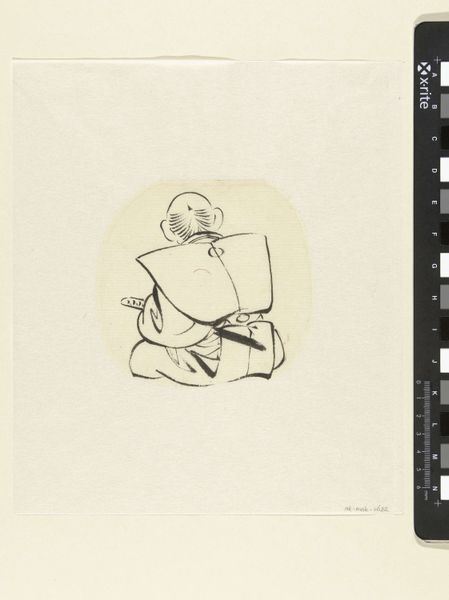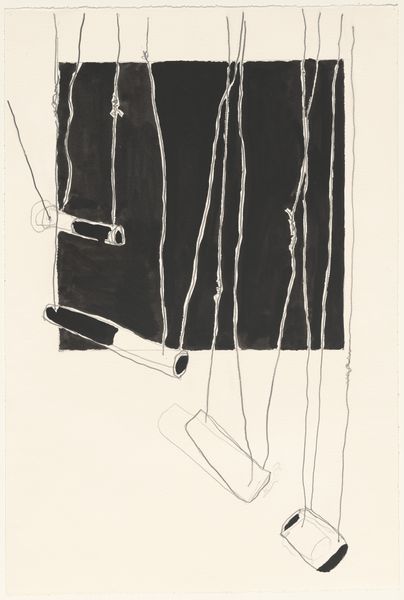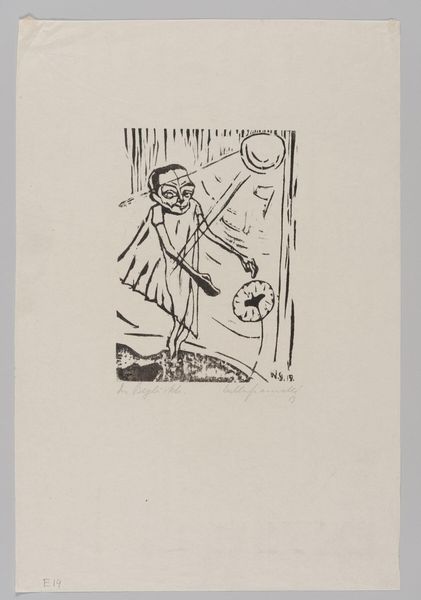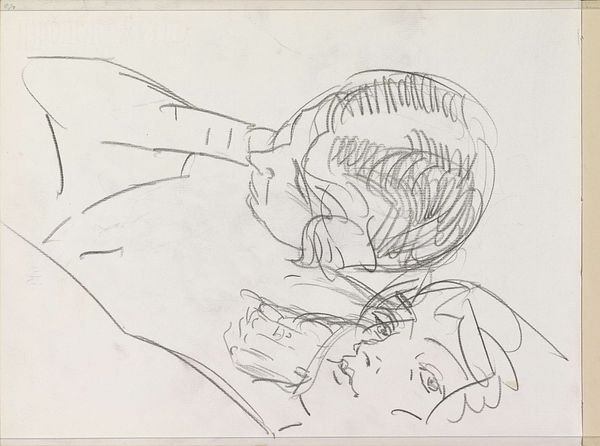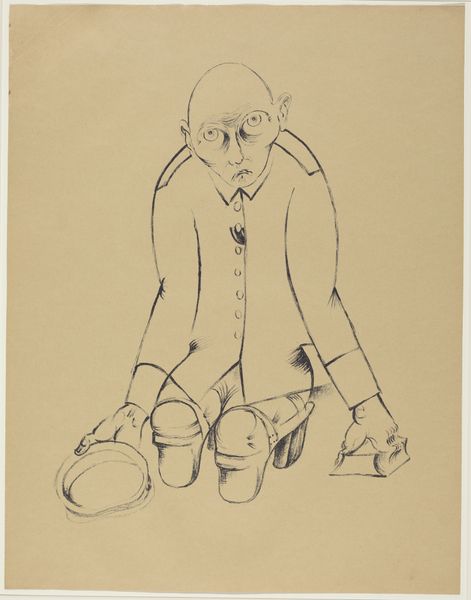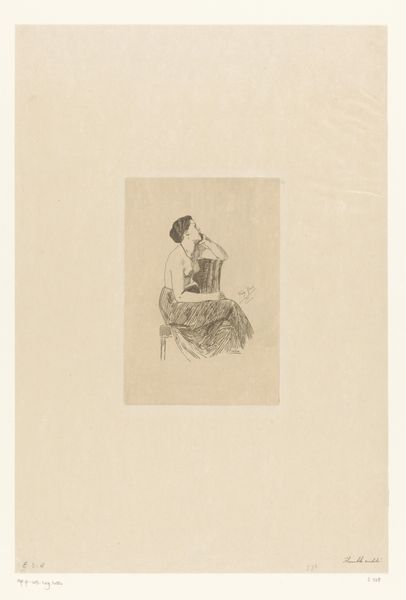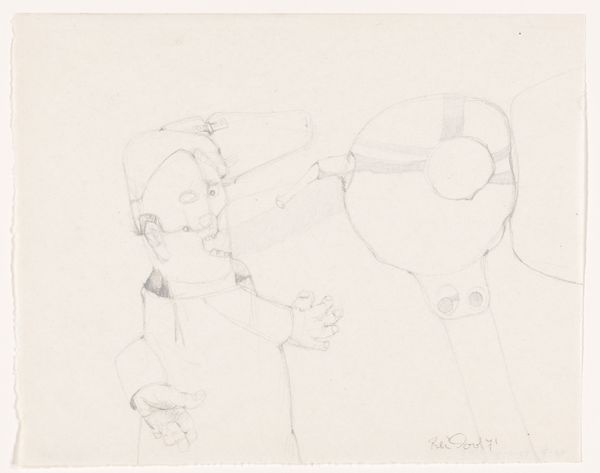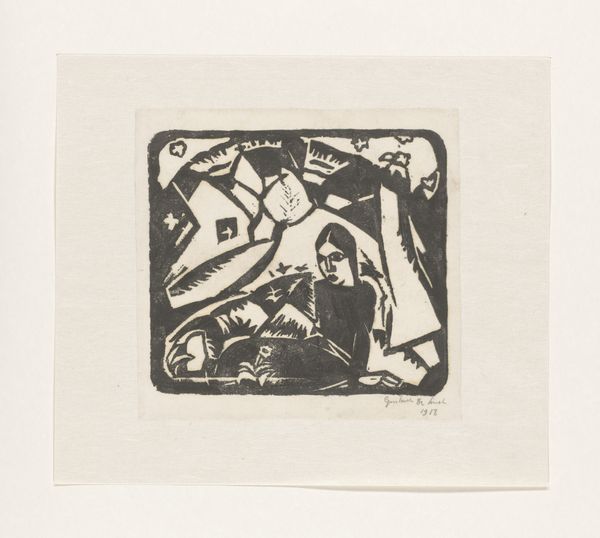
drawing, ink
#
portrait
#
drawing
#
figuration
#
ink
#
line
Copyright: Public domain
Curator: What do you see in John Austen’s ink drawing of Hamlet? Editor: Well, it's striking how clean and minimal the line work is, almost like an etching. It’s called 'Hamlet,' and while the date is unspecified, it really evokes a sense of stylized formality with the subject’s rich attire. What strikes me is the material contrast -- the weight of that regal fur against the seeming lightness of his gesture with what he holds in his left hand... How do you read it? Curator: I notice first how the medium itself, ink, historically signifies a democratizing force in the creation of images – easily reproduced, accessible. Austen uses the traditional portrait format here, which was traditionally associated with painted work for the elites. By rendering it in line, using reproductive media of the time, Austen both mimics and undermines those social divisions. We see the mode of material production explicitly confronting established class hierarchies here. Editor: That's interesting. I hadn't considered how the material itself could be a commentary. Do you think that commentary is deepened by any of the details or specific adornments Austen highlights? Curator: Absolutely! Consider the stark simplicity of the rendering against the elaborate costumes of nobility. That costume speaks to consumption. Austen wants us to examine the labor behind those garments and the raw materials consumed by the elite. Where was this paper manufactured? Who profited from the production of this work, and who might consume the final product? All become potent questions through his chosen media and composition. Editor: So it's not just a portrait of Hamlet, but a material study of its production and the consumption habits it signifies? Curator: Exactly. By reducing form to its most basic component--a line-- Austen asks us to unpack both artistic process, the theatrical tradition this drawing springs from, and the class relations represented within that dramatic production itself. Editor: I'm now looking at this in a totally different way, thinking about the cost of performance, then and now. Thanks!
Comments
No comments
Be the first to comment and join the conversation on the ultimate creative platform.
